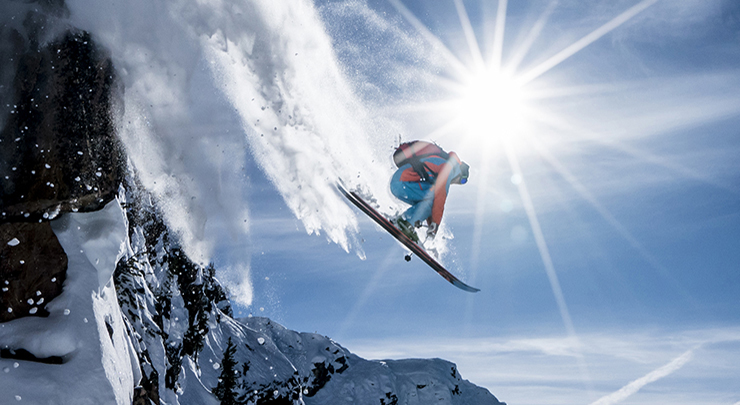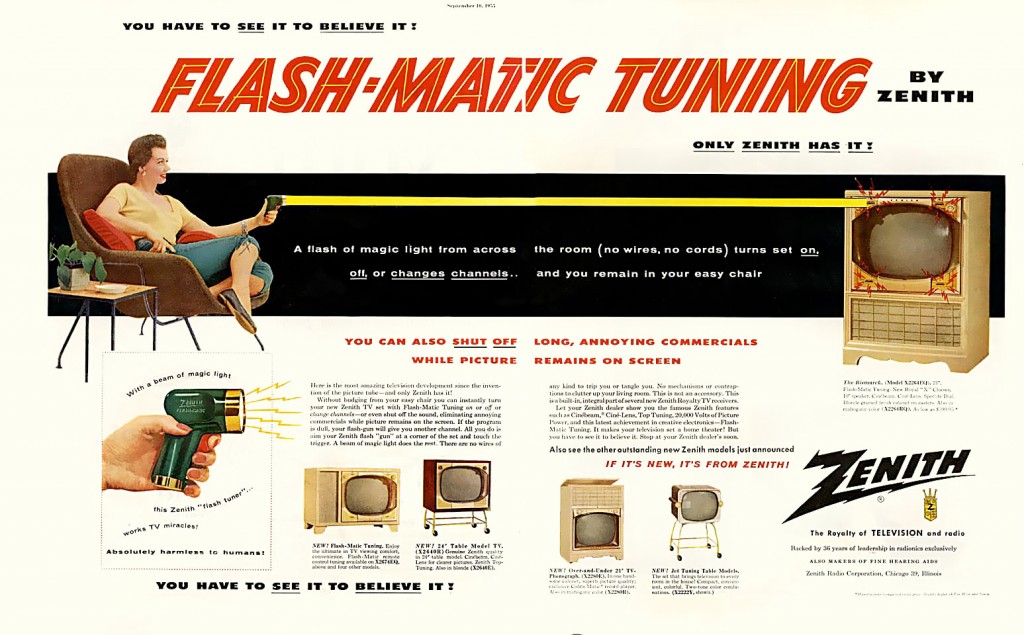I am writing this article after attending the latest Warren Miller Entertainment ski film, “Here, There & Everywhere”, at the first of two showings on a Saturday night in November at the Bushnell Theater, in Hartford, Connecticut. For those unfamiliar, this was the 67th in a series of annual ski films that bear the name of the now 92-year-old, legendary filmmaker, author, philanthropist, and outdoor sports enthusiast, Warren Miller.
Miller actively directed and narrated each of these films through the 1990’s, selling the company to his son in the 1980’s, with the company eventually being sold to a series of publishing conglomerates, starting with Time, Inc. and now Active Interest Media (the publisher of Ski Magazine and a long list of equestrian, backpacking, and outdoor lifestyle magazines.) It has come a long way from when a young Warren Miller was discharged from the U.S. Navy in 1946, buying his original wind-up 8mm Bell & Howell movie camera, and camping out in a teardrop camper in the parking lot of Squaw Valley for two years. The production quality of the films has spectacularly improved, with high-definition cameras and helicopters replacing the old 8mm movie camera, as I can clearly recall from the time when I attended my first Warren Miller film back in 1971 or 1972.

That night’s two showings in Hartford represented only one of 136 venues in the United States for the English language version of the current film, with the United States being one of 14 countries that are included in the world tour. These extravagant live events all take place within the month of November, leading into the upcoming ski season (already underway at some resorts that strive for early opening dates.) People pay an average of $20.00 per ticket (with a discount for purchasing a month or more in advance) to attend, and there were probably 1,000 people at the Bushnell that night for the first showing. Per the Warren Miller Entertainment website, the films are shown to 500,000 fans per year.
I am relating this story because I see remarkable parallels between the business enterprise that a young Warren Miller founded and the histories of so many of the leading campground operations today, particularly the nominees and winners of the annual National ARVC Park of the Year awards. Many campgrounds share a common beginning, with owners who devoted endless hours to performing every necessary task, saddled with shoestring budgets and staffs that often consisted of little more than family members who shared the commitment to a vision. One common element that I see between Warren Miller Entertainment and successful campground operations is an investment into consistent improvements from one year to the next.
The parallels between Warren Miller films and the campground industry only begin with production quality and infrastructure. Both businesses are probably incorrectly perceived by most people as “seasonal” operations, since most of their respective incomes are generated within very narrow calendar windows. (If you think that a campground with a prime season between Memorial Day and Labor Day has a short season, imagine showing a film in venues around the world within the single month of November!) What most people fail to understand are the endless hours and investments behind the scenes that involve everything from backhoe labor to hiring an upcoming season’s entertainment.
I should also mention that the Warren Miller films feature some of the finest athletes on skis and snowboards today (as well as a tip of the hat this year to snowmobiles and fat bikes.) The films do not simply show footage of anybody who knows how to stand up on a pair of skis or a snowboard. The common thread here would probably be represented by the quality of the staff employed at a park, a persuasive argument for recruiting the best employees possible.
The success and longevity of Warren Miller films is only partially based upon the income from ticket sales to people who want to see the finest athletes on snow. Perhaps the biggest players are the sponsorships. These include the obvious connections like Ski Magazine, with the same corporate ownership, as well as several of the destinations, such as Western Montana’s Glacier Country, that are featured in the various location segments within the current film. Other current sponsors include K2 Skis, L.L. Bean, Helly Hansen Outerwear, and Moosehead Beer. Then there are local sponsorships and media partners, such as the Hartford Courant newspaper and Connecticut’s Ski Sundown.
The sponsors pay dearly for the opportunity to be promoted both within the films and within the events. In at least one segment of the film, the product placement for Moosehead Beer was almost embarrassing in its transparency. In another segment, everybody seems to be skiing on K2 skis, with frequent close-ups of the K2 logo and branding. These sponsors are also prominently featured in the “Warren Miller’s Snoworld” magazine that is given out to each person who attends a film showing (remember that the parent company is in the magazine publishing business), featured in the on-screen advertising preceding the film and shown during an intermission, given the opportunity to participate in the free “swag” coupons that are available online exclusively to film attendees, on on-location signage, and during the live program segments where handlers work up the crowd to cheer for sponsors.
There are also opportunities for schools, clubs, and independent promoters to host DVD showings of the films in local venues in exchange for an upfront guarantee or percentage of gross tickets sales, whichever is greater. These opportunities come with a wide range of marketing and promotional support materials that help to ensure a successful partnership.
Whether a sponsor or a venue for a local showing, these arrangements are highly profitable for Warren Miller Entertainment and present an opportunity for businesses to effectively reach a wide audience with sought-after demographics. The sponsorships themselves help to drive ticket sales. For example, our price of admission was more than offset by the value of the free lift ticket to Vermont’s Sugarbush ski resort, a solid incentive for us to attend the showing. When we ski at Sugarbush this winter, we will be spending money on food and drinks, while others might include lodging, rentals, and additional lift tickets. These are clearly win-win situations for everybody involved.
For years, I have been encouraging campgrounds to develop partnerships with local businesses that need their guests … and that their guests need to both choose a campground and to justify extending their stays. I am hoping that this article will have demonstrated the potential benefits of building those relationships with any of a wide range of local businesses that depend upon the same base of consumers that is represented by your guests. This goes far beyond having local businesses buy an advertisement in a guest guide or displaying their literature in your registration area. It is to your advantage to work these partnerships for everything they’re worth. Your business will benefit, and the results will be clearly visible in your bottom line. Perhaps the most famous Warren Miller one-liner from among his many compiled words of wisdom sums this up: “If you don’t do it this year, you’ll just be one year older when you do.”
This post was written by Peter Pelland

